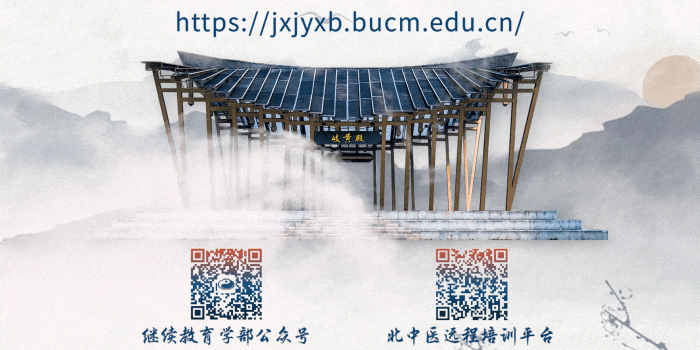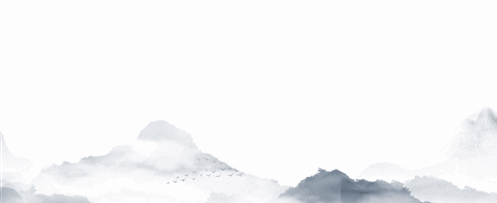
Origin of Meridians
The theory of meridians is one of the core foundations of traditional Chinese medicine (TCM). The earliest documented references can be traced back to the “Pulse Book” unearthed from the Mawangdui tombs, which mentions “pulse” in the context of the “Eleven Meridians of the Feet and Arms” and the “Eleven Yin and Yang Meridians.” Throughout history, the theory of meridians has been continuously enriched, guiding our lives and clinical practice.
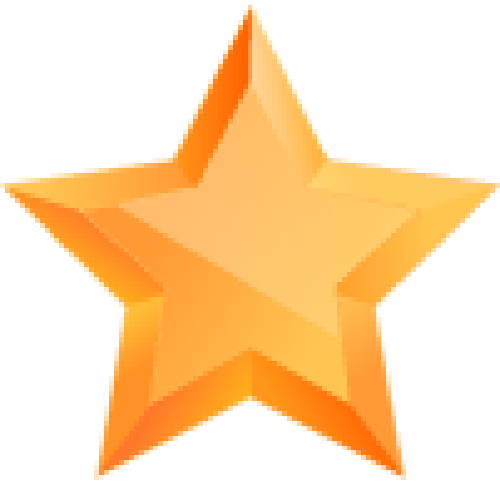


Eleven Meridians of the Feet and Arms
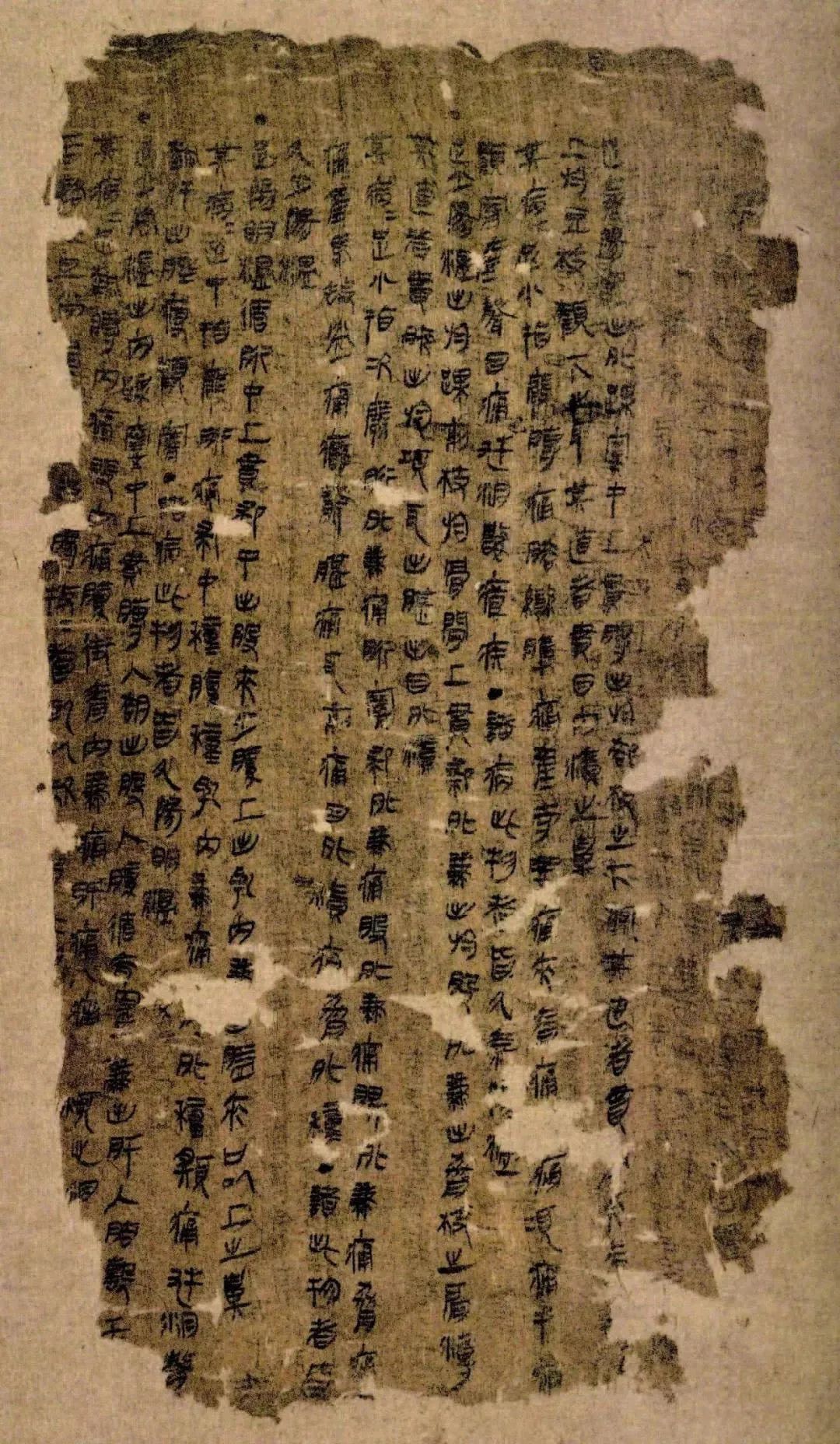
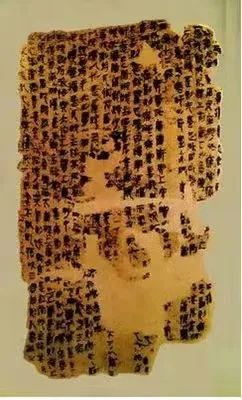
Eleven Yin and Yang Meridians



What Are Meridians?
Meridians are pathways that run throughout the body, facilitating the flow of qi (vital energy) and blood, connecting the internal organs with the body surface, and communicating between different parts of the body. They play a crucial role in regulating bodily functions. Despite the broad application of meridian theory, there has been much debate regarding the essence and structural basis of meridians. The journal Science has listed the question, Is there a scientific basis to the Meridian System in traditional Chinese medicine? as one of the most pressing scientific issues globally. What does the meridian system encompass? What are its clinical applications? What methods of health preservation are associated with meridians?
Meridians refer to both the main channels (经脉, jīng mài) and the collateral channels (络脉, luò mài). The original meaning of “经” (jīng) is “to thread” or “to follow a path,” indicating the main pathways within the meridian system that exist internally, connecting the upper and lower parts of the body and linking the internal and external. The original meaning of “络” (luò) is “network,” referring to the secondary pathways branching off from the main channels, which exist on the body surface. The Spiritual Pivot states: “The main channels are internal, while the branches that spread out are the collaterals; the smaller branches are called ‘sun’ (孙, sūn).” This categorizes the channels based on size and depth into “main channels,” “collateral channels,” and “sun channels.”
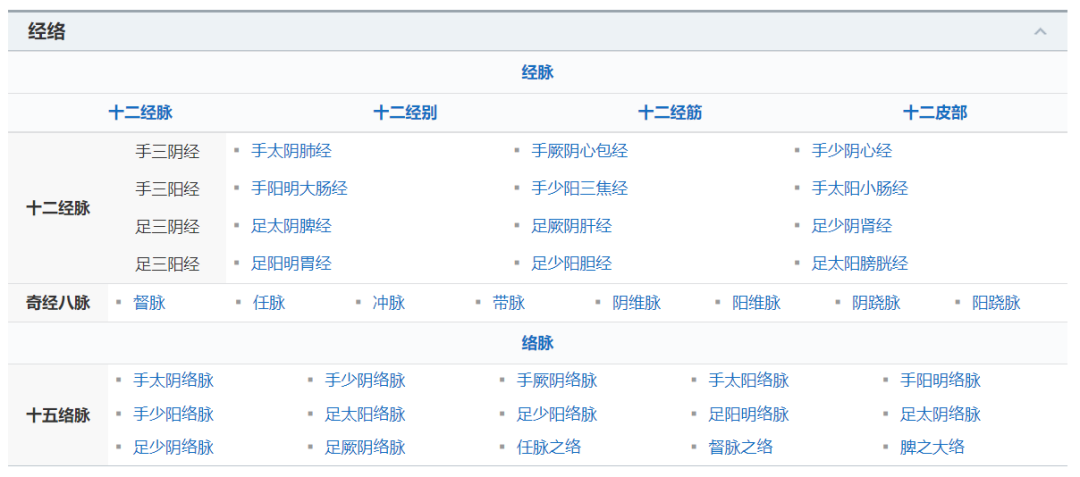
✦ + Meridian System (Image Source: Baidu Encyclopedia)
The naming convention of the twelve meridians, categorized as “Hand and Foot – Yin and Yang – Zang and Fu” (脏腑, zàng fǔ), was largely established in the Huangdi Neijing. The meridians distributed on the inner side of the limbs are considered Yin, while those on the outer side are considered Yang. The internal organs that “store essence and qi without leaking” are classified as Zang (Yin), while those that “transform and transport substances without storing” are classified as Fu (Yang). The Yin meridians correspond to Zang and Fu, while the Yang meridians correspond to Fu and Zang, forming a relationship of mutual correspondence between the meridians and the internal organs.
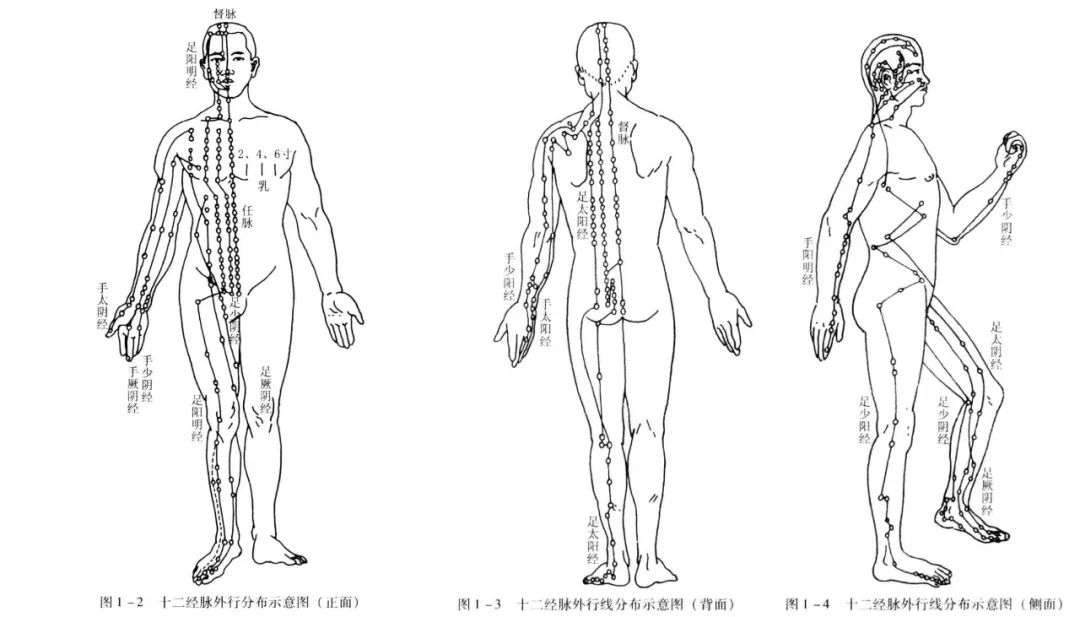
✦ + Distribution of the Twelve Meridians
The twelve meridians are the most significant part of the meridian system, including the Hand Taiyin Lung Meridian (手太阴肺经, shǒu tàiyīn fèi jīng), Hand Yangming Large Intestine Meridian (手阳明大肠经, shǒu yángmíng dàcháng jīng), Foot Yangming Stomach Meridian (足阳明胃经, zú yángmíng wèi jīng), Foot Taiyin Spleen Meridian (足太阴脾经, zú tàiyīn pí jīng), Hand Shaoyin Heart Meridian (手少阴心经, shǒu shǎoyīn xīn jīng), Hand Taiyang Small Intestine Meridian (手太阳小肠经, shǒu tàiyáng xiǎocháng jīng), Foot Taiyang Bladder Meridian (足太阳膀胱经, zú tàiyáng pángguāng jīng), Foot Shaoyin Kidney Meridian (足少阴肾经, zú shǎoyīn shèn jīng), Hand Jueyin Pericardium Meridian (手厥阴心包经, shǒu juéyīn xīnbāo jīng), Hand Shaoyang Sanjiao Meridian (手少阳三焦经, shǒu shàoyáng sān jiāo jīng), Foot Shaoyang Gallbladder Meridian (足少阳胆经, zú shàoyáng dǎn jīng), and Foot Jueyin Liver Meridian (足厥阴肝经, zú juéyīn gān jīng). (Listed in order of circulation)
The term “twelve meridians” broadly includes the twelve main meridians and their related branches, collaterals, and sinews. In a narrower sense, it refers specifically to the twelve main meridians categorized as “Hand Three Yang,” “Foot Three Yang,” “Hand Three Yin,” and “Foot Three Yin,” also known as the twelve regular meridians.

Hand Yangming Large Intestine Meridian & Foot Yangming Stomach Meridian
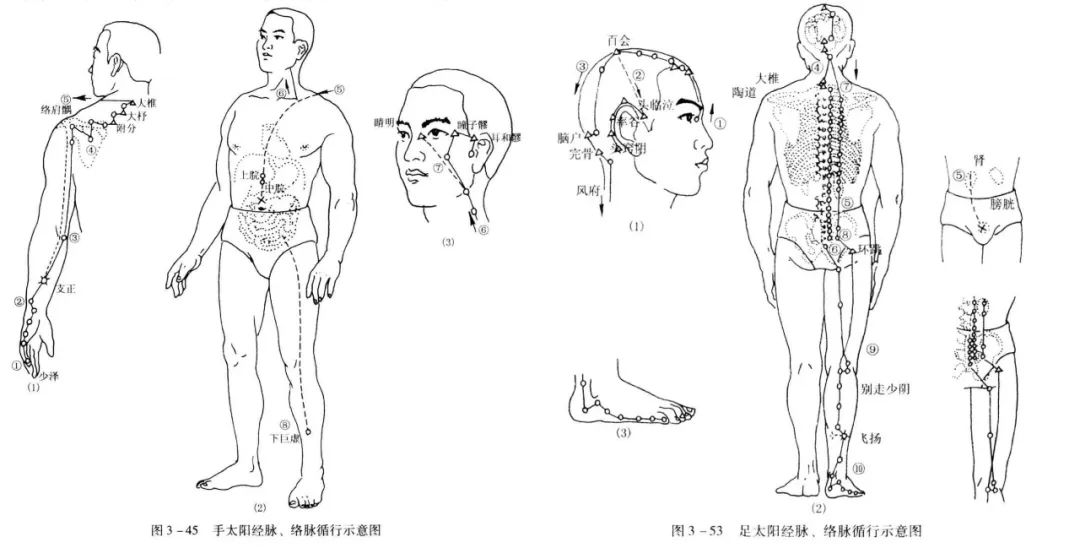
Hand Taiyang Small Intestine Meridian & Foot Taiyang Bladder Meridian
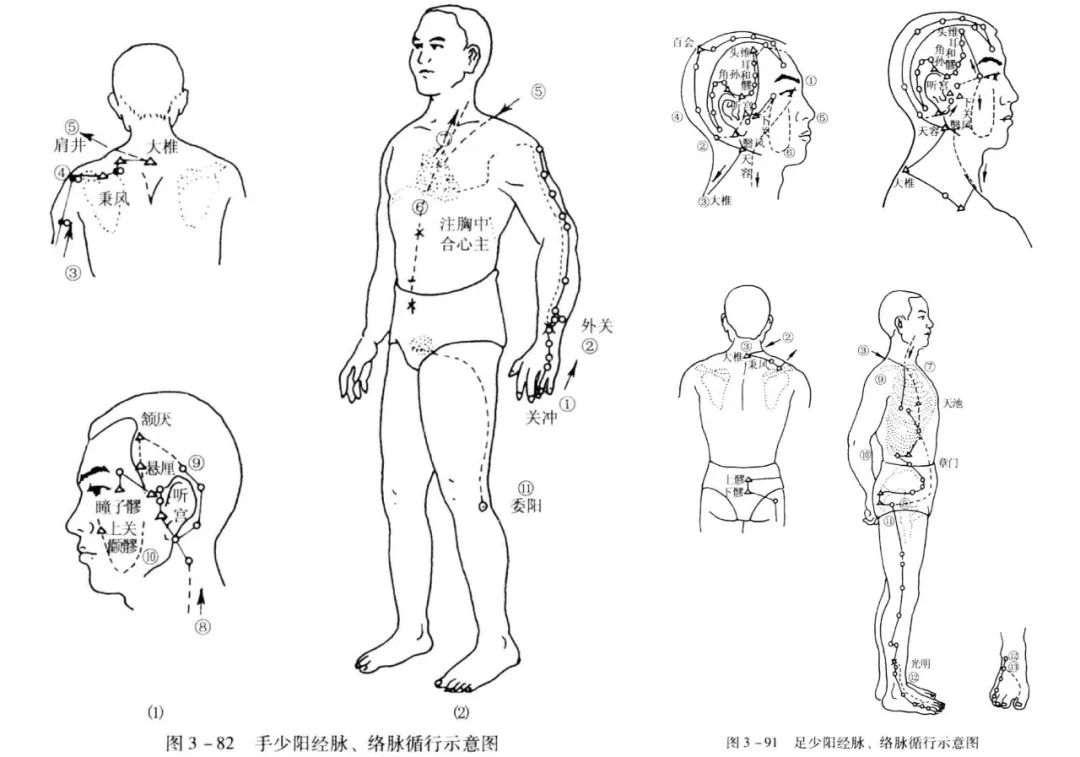
Hand Shaoyang Sanjiao Meridian & Foot Shaoyang Gallbladder Meridian
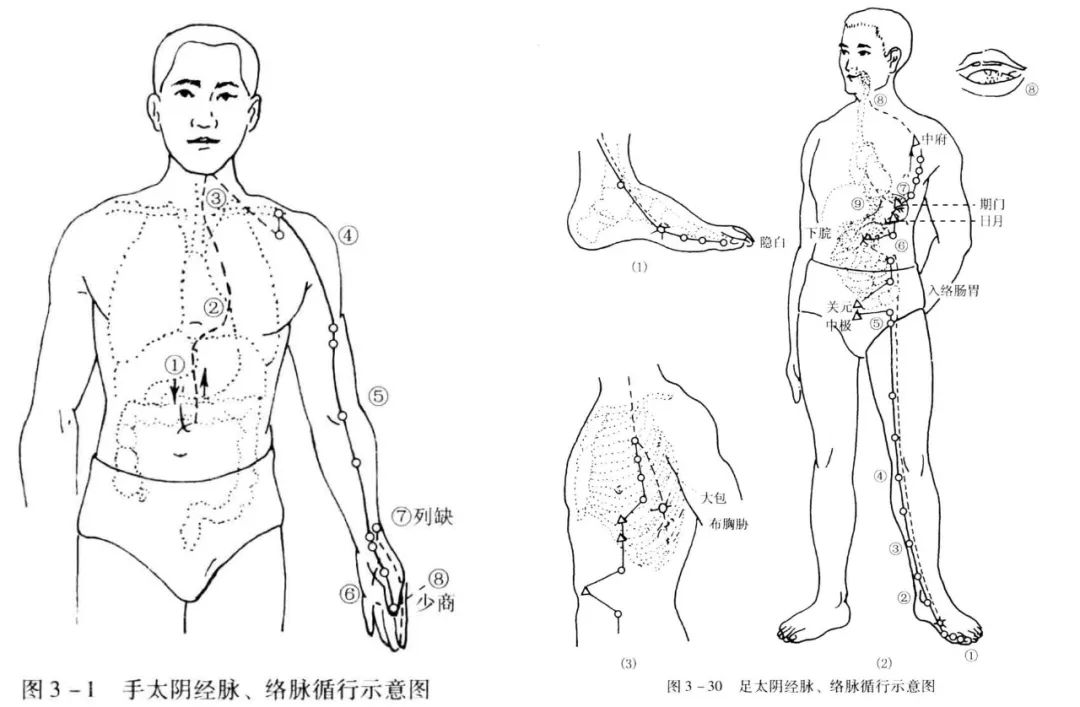
Hand Taiyin Lung Meridian & Foot Taiyin Spleen Meridian
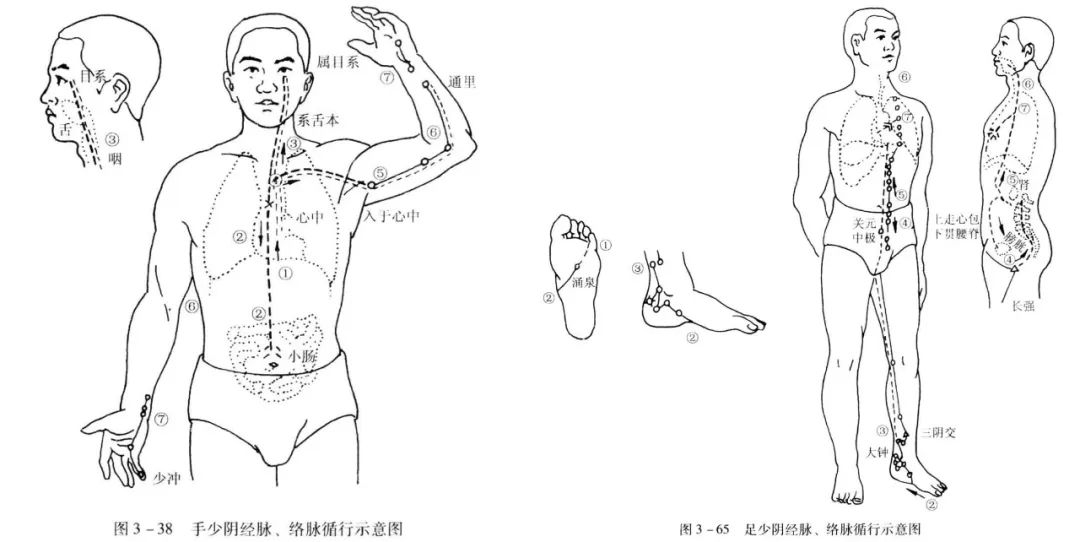
Hand Shaoyin Heart Meridian & Foot Shaoyin Kidney Meridian
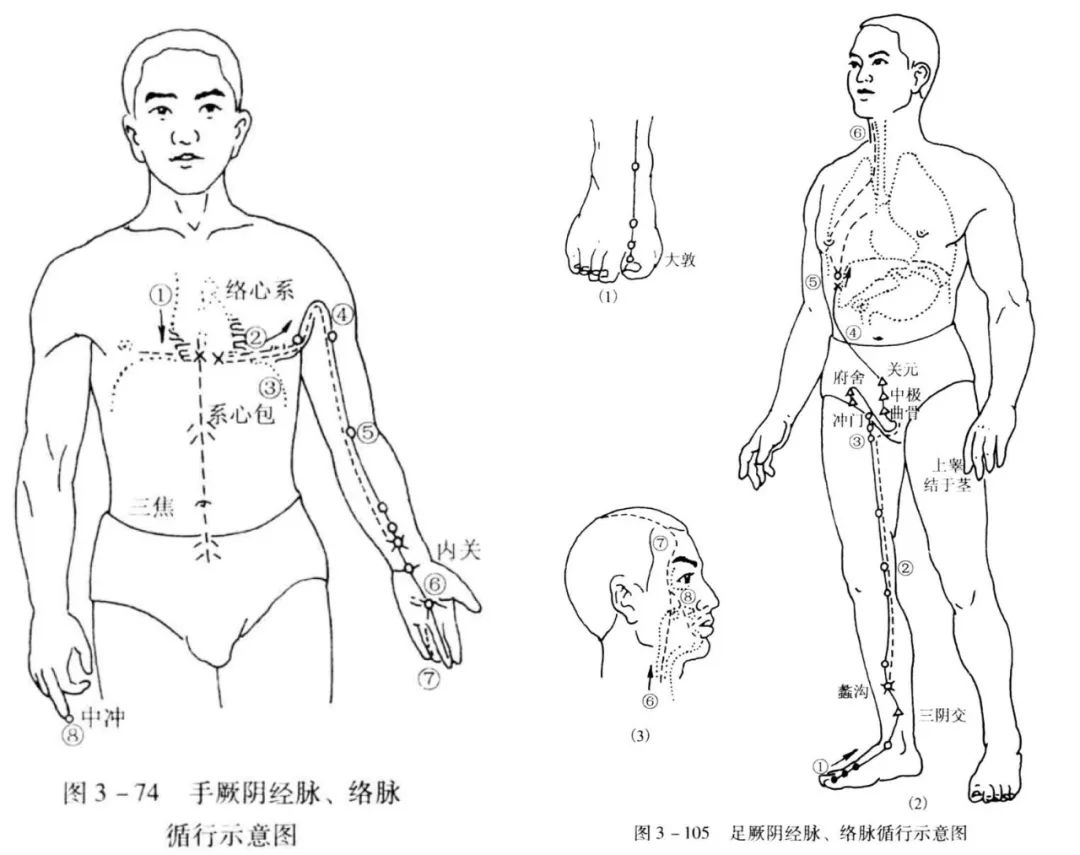
Hand Jueyin Pericardium Meridian & Foot Jueyin Liver Meridian
Swipe to view the circulation of the twelve meridians.
Practical Applications of Meridians
1. Explaining Pathological Changes and Differentiating Syndromes
The meridian system is closely related to the occurrence and transmission of diseases. When a particular meridian’s function becomes abnormal, it is more susceptible to invasion by “external pathogens.” After a disease occurs, these “external pathogens” can further penetrate along the meridians, exacerbating the internal organ’s pathological changes.
Meridians connect the internal and external; they link the internal organs and have specific pathways on the body surface. Symptoms in different areas reflect corresponding changes in the meridians and internal organs. For example, headaches, a common ailment, can be diagnosed based on the distribution of meridians in the head. Pain in the forehead is often related to the Yangming Meridian, pain on the sides is often related to the Shaoyang Meridian, pain in the neck is often related to the Taiyang Meridian, and pain at the crown is related to the Jueyin Meridian. If the pain persists, other pathological changes may also occur in corresponding points along the meridian.
2. Assisting in Disease Diagnosis
Meridians are not only pathways for external pathogens to enter the body but also routes for mutual influence between internal organs and surface tissues. Additionally, the qi and blood flowing within the meridians nourish different layers of muscles, tendons, and bones. Therefore, when internal organs exhibit pathological changes, corresponding meridians will reflect some abnormal changes.
In TCM, the saying “observing the external to infer the internal” suggests that by examining external signs, one can infer internal changes. Diagnosing conditions based on meridian theory follows this principle. For instance, tenderness at the Zhongfu point (中府穴, zhōng fǔ xué) or a sensation of heat upon touching the skin, or even dry skin resembling fish scales, may indicate lung issues. When there is pain in the chest and ribs, this area corresponds to the liver meridian, which may be affected by external pathogens, emotional disturbances, dietary irregularities, or trauma.
3. Guiding Clinical Treatment
The theory of meridians has long been widely used to guide treatments across various clinical disciplines, especially in acupuncture, massage, and herbal prescriptions. The “meridian point selection method” in acupuncture is a specific application of meridian theory. For example, for stomach issues, the Zusanli point (足三里, zú sān lǐ) is selected, and for rib pain, the Taichong point (太冲穴, tài chōng xué) is chosen. Herbal treatments also utilize meridians as a channel; for instance, Ma Huang (麻黄, má huáng) enters the Bladder Meridian and Lung to induce sweating, relieve asthma, and promote diuresis. The text “Danxi’s Heart Method” mentions specific herbs for different headache locations, such as Chuanxiong (川芎, chuān xiōng) for Taiyang headaches, Baizhi (白芷, bái zhǐ) for Yangming headaches, Chaihu (柴胡, chái hú) for Shaoyang headaches, and Cangzhu (苍术, cāng zhú) for Taiyin headaches. Although the pathways of herbs and acupoints differ, the effects are similar, both relying on meridians to alleviate disease symptoms.
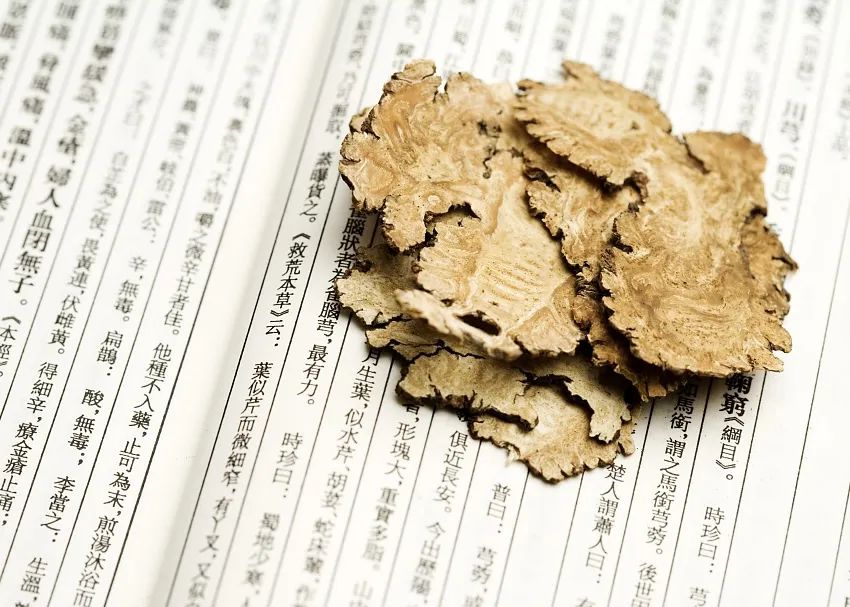
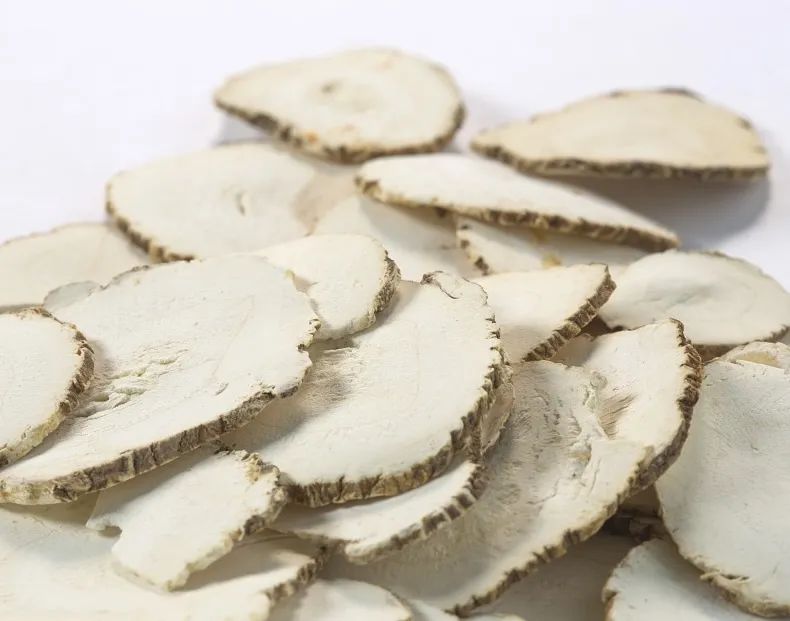
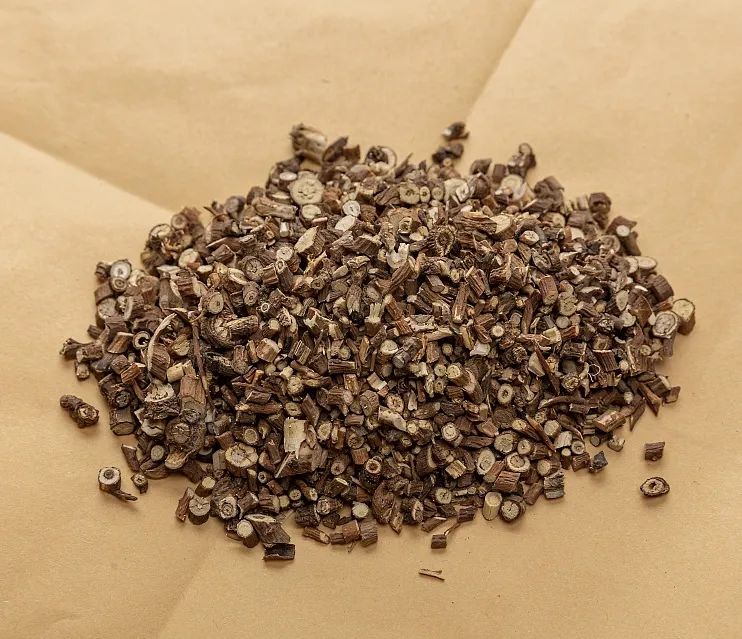
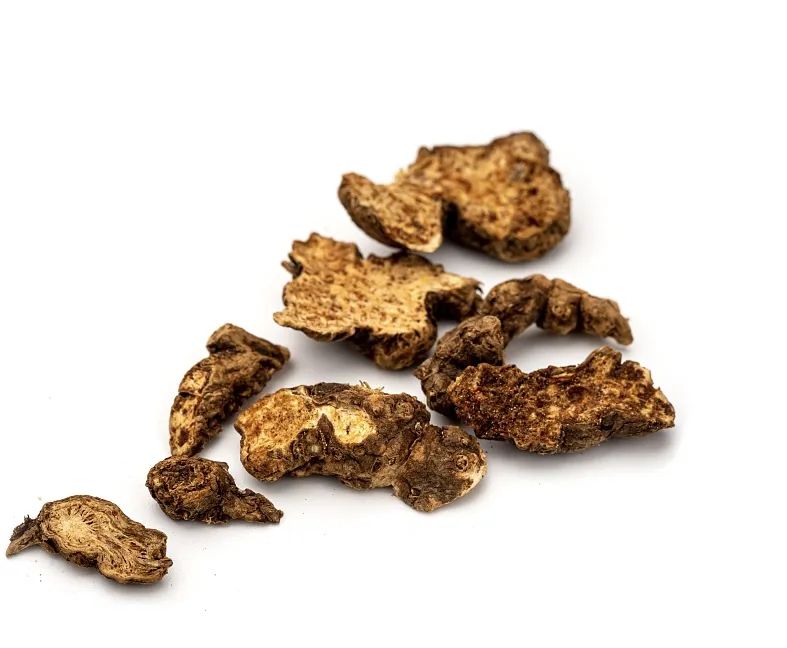
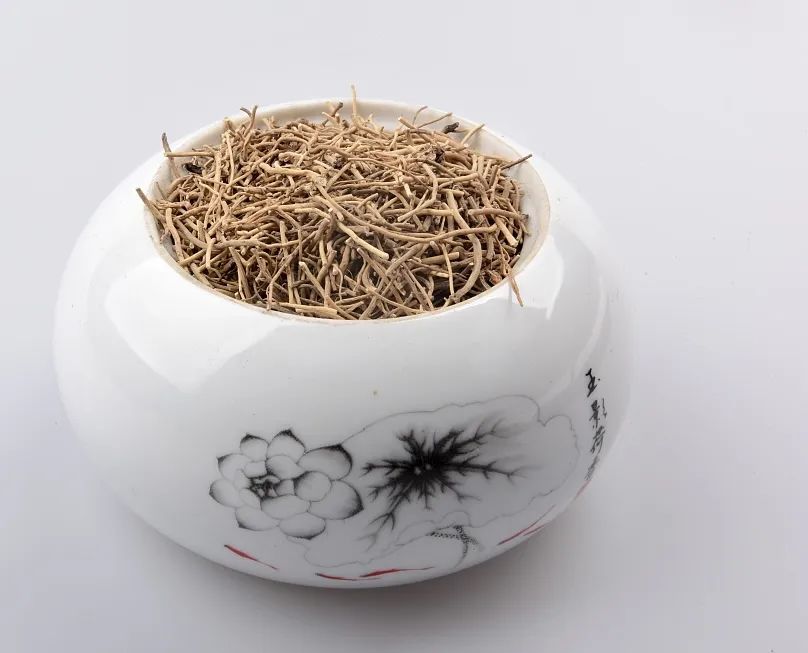
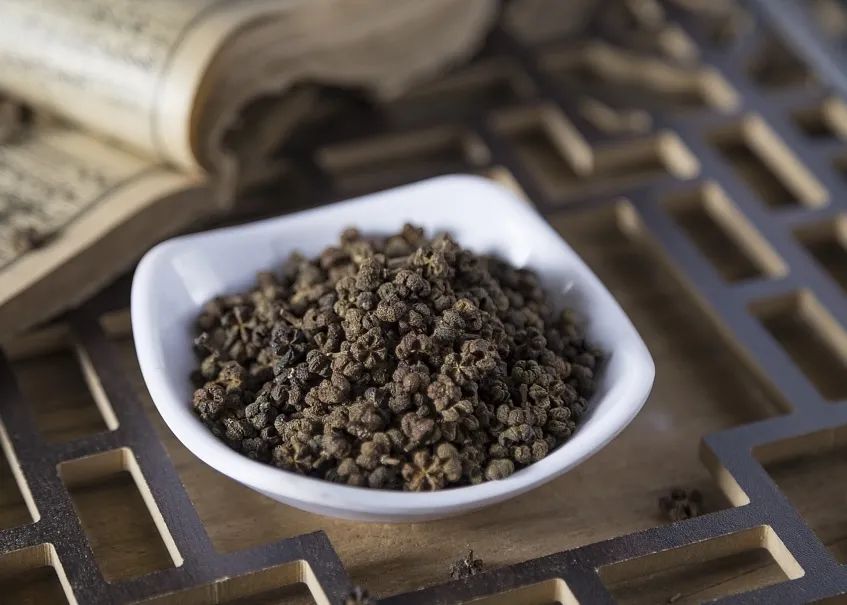
Swipe to view: Chuanxiong, Baizhi, Chaihu, Cangzhu, Xixin (细辛, xì xīn), Wuzhuyu (吴茱萸, wú zhū yú)
Health Preservation through Meridians
TCM holds that “when there is smooth flow, there is no pain; when there is pain, there is no smooth flow.” The unobstructed flow of meridians is crucial for health and longevity.
# 01
Maintain a Positive Mood
Establish a Regular Routine

TCM believes that extreme emotional changes can disrupt the flow of qi and blood, leading to various health issues. For example, anger can increase the risk of vascular rupture in patients with cardiovascular diseases.
# 02
Balanced Diet
Healthy Eating
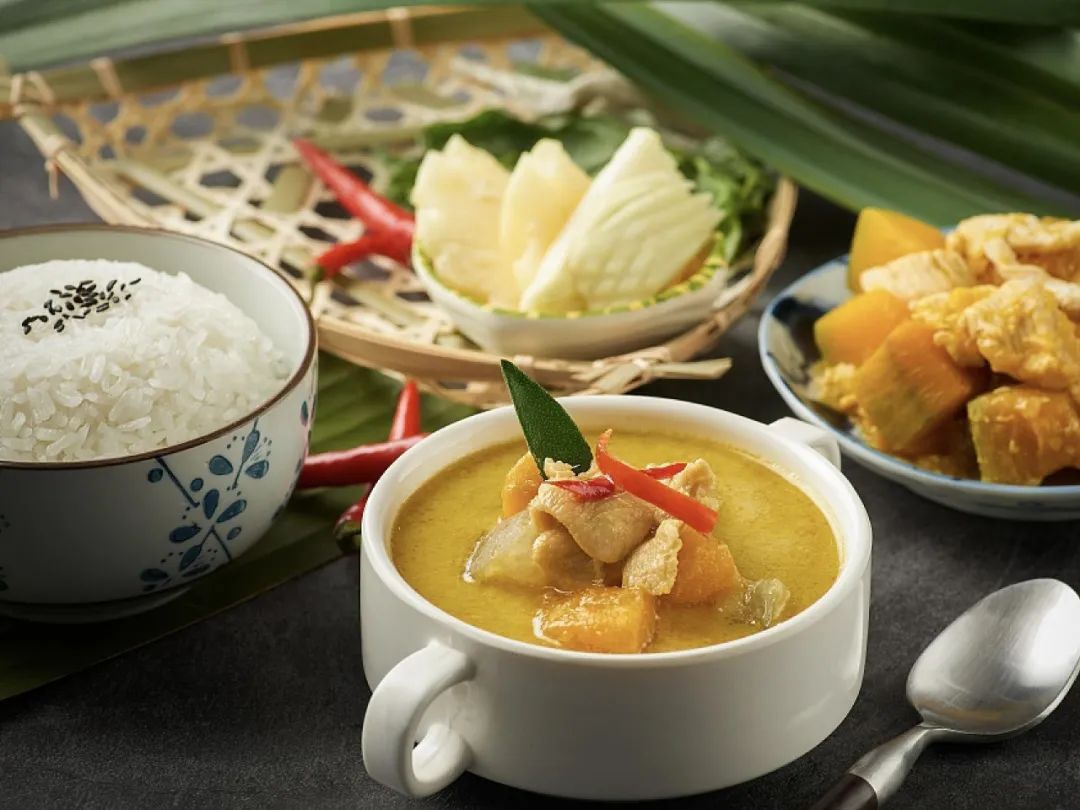
Diet should be balanced, reducing the intake of fried and fast foods. Daily meals should include fresh vegetables, fruits, and high-quality proteins. Many food items also have medicinal properties, such as red dates (红枣, hóng zǎo), lily (百合, bǎi hé), adzuki beans (赤小豆, chì xiǎo dòu), and coix seed (薏苡仁, yì yǐ rén), which can be chosen based on individual constitution and seasonal characteristics.
# 03
Regular Physical Activity
Balance Work and Rest
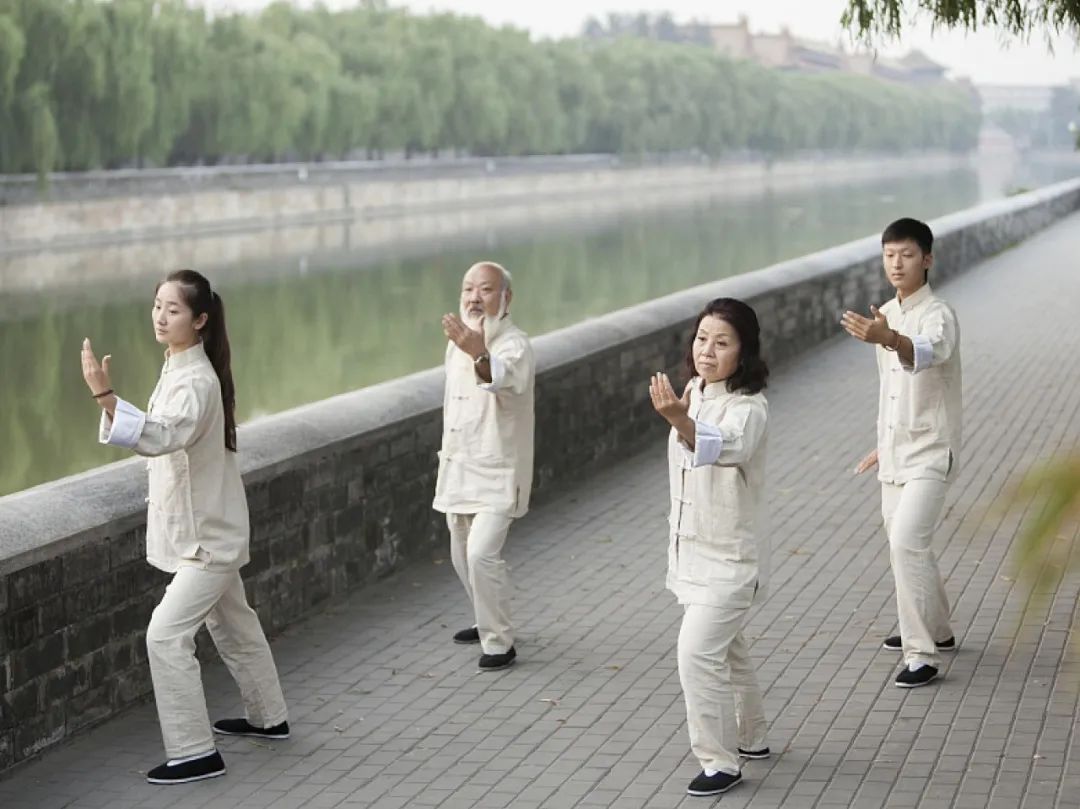
The Lüshi Chunqiu states, “Movement helps to relieve stagnation,” indicating that the smooth flow of qi and blood is essential for health. If stagnation occurs, various diseases may arise. In daily life, it is important to balance work and rest, avoiding prolonged use of any one organ to prevent fatigue. Traditional exercises such as Tai Chi (太极拳, tài jí quán), Baduanjin (八段锦, bā duàn jǐn), Yijinjing (易筋经, yì jīn jīng), and Wuqinxi (五禽戏, wǔ qín xì) are beneficial for promoting joint mobility, relaxing muscles, and enhancing the flow of qi and blood, making them suitable for long-term practice by a wide audience.
# 04
Acupoint Pressing
Massage and Tapping Meridians

Pressing acupoints and massaging the meridians can stimulate the flow of qi and blood. By clearing blocked meridians, one can improve or eliminate negative emotions.
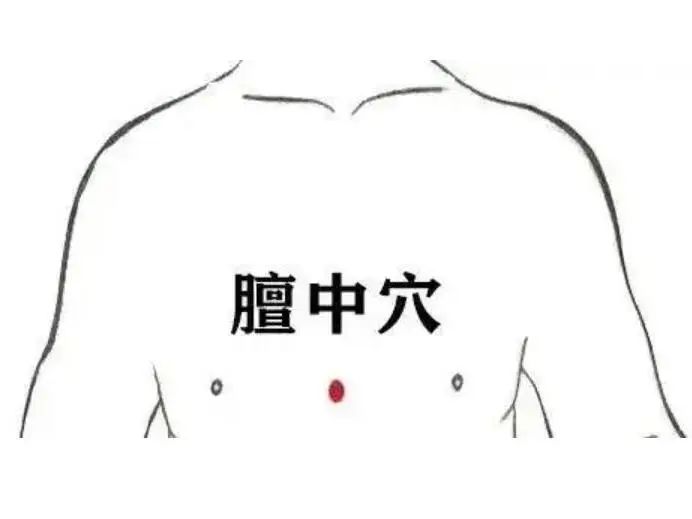
Gently massaging the Dan Zhong point (膻中穴, dān zhōng xué) can calm the mind and relieve anxiety: use the thumb to apply gentle pressure on the point for about five seconds, then rest for three seconds. When feeling angry, you can stroke downwards about a hundred times to help smooth the flow of qi.
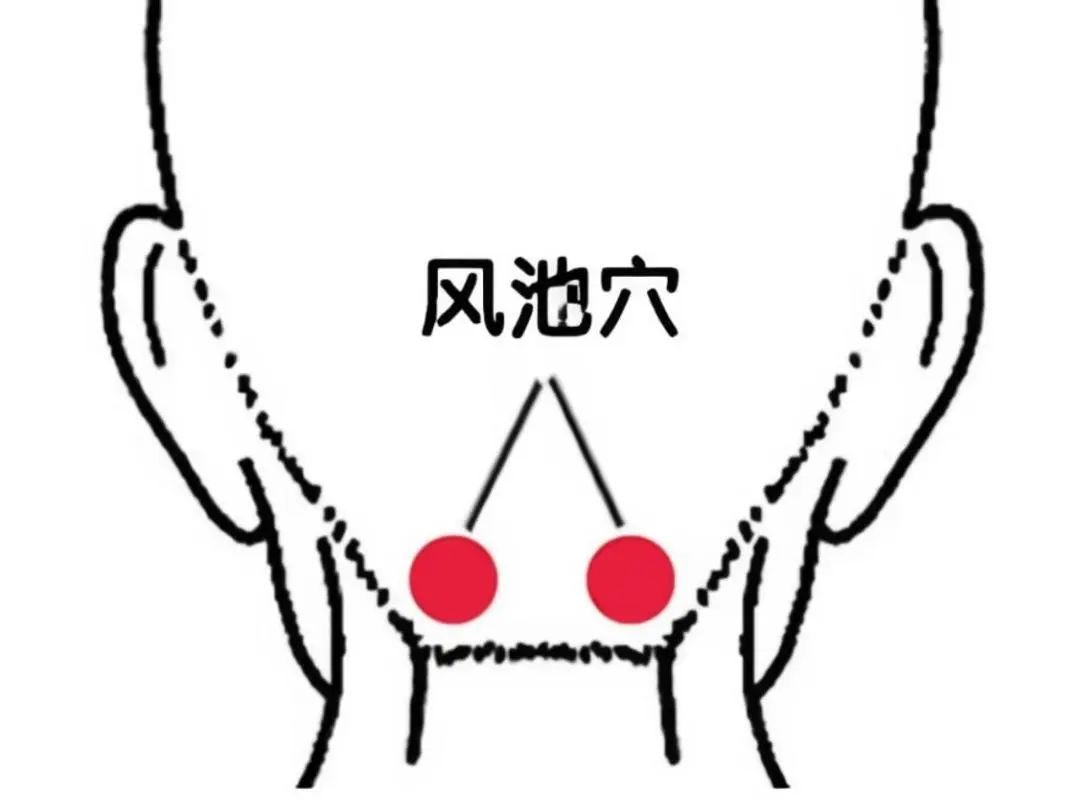
Lightly tapping the Fengchi point (风池穴, fēng chí xué) can relieve tension: located at the back of the neck, in the depression between the sternocleidomastoid and trapezius muscles. Tapping this point can refresh the mind; if you feel fatigued, tense, or anxious, you can tap lightly at any time, using a pressure that causes slight discomfort.
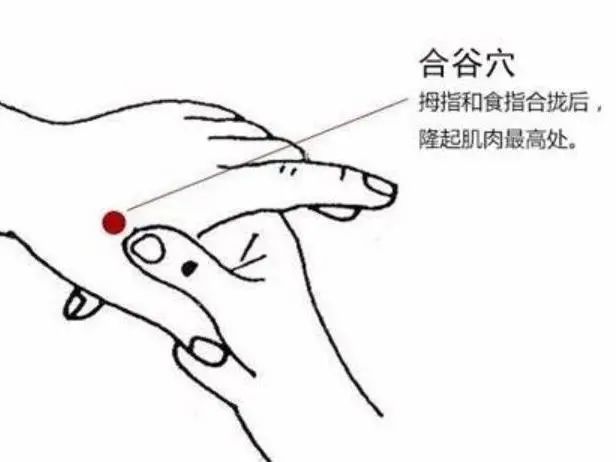
Applying pressure to the Hegu point (合谷穴, hé gǔ xué) can alleviate headaches and insomnia: this point belongs to the Hand Yangming Large Intestine Meridian, and massaging it can provide relief for tension headaches, insomnia, and neurasthenia.
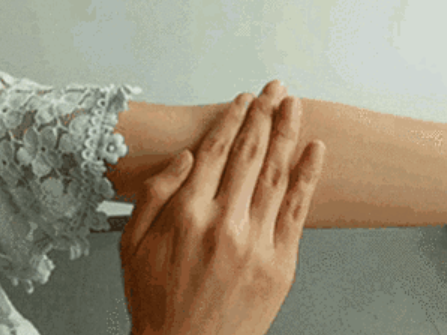
Gently tapping the elbow pit: the elbow is a region dense with meridians, encompassing the Lung Meridian, Pericardium Meridian, Heart Meridian, etc. Tapping this area can help eliminate heat and toxins from the heart and lungs, serving as an excellent daily health maintenance method. Light tapping is sufficient, causing slight redness, which can help clear the meridians and promote the flow of qi and blood.
Swipe left and right to view the methods.
# 05
Moxibustion
Warming the Meridians

Moxibustion utilizes the heat from burning mugwort to warm and stimulate acupoints, achieving the effects of warming the meridians and nourishing the internal organs. If practiced consistently, it is a simple, easy, practical, and effective method for health preservation and disease prevention.
The Future of Meridians
The science of meridians is widely applied in daily life. Acupuncture therapy guided by meridian theory has been practiced for over 5,000 years in China and has spread to 183 countries and regions, benefiting people worldwide. Our school’s meridian science was also highlighted in the “Traditional Chinese Medicine Experience Pavilion” during this year’s Winter Olympics.
Our School’s Teachers
In an Interview
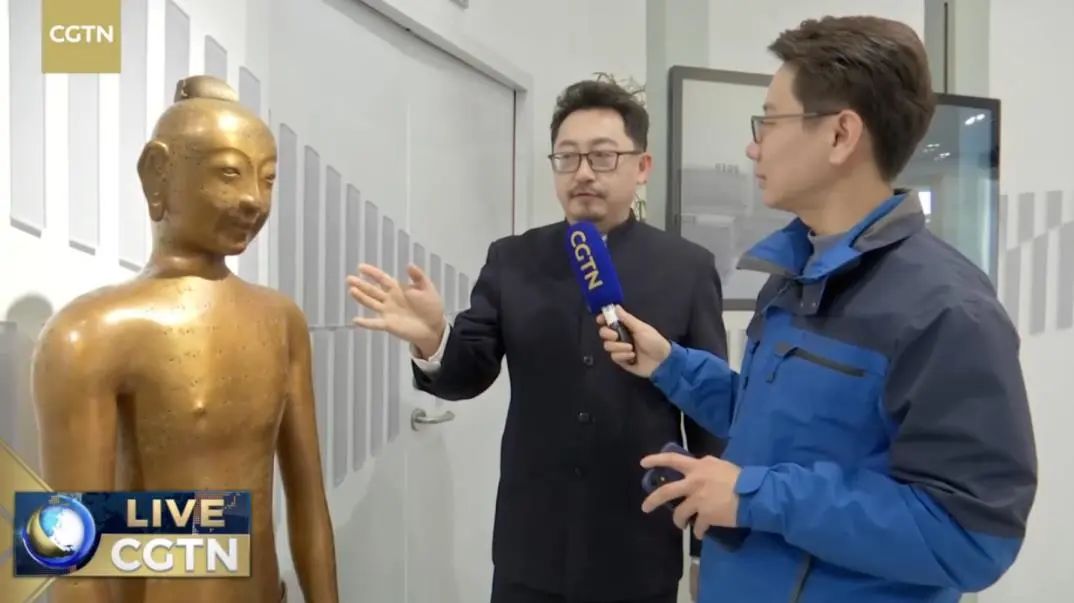
The human meridian system is a complex adaptive regulatory system, and its scientific basis is gradually being validated. The development of Western medicine benefits from the continuously evolving modern scientific and technological system. Similarly, we should recognize that the development of TCM is also supported by China’s traditional scientific and technological systems. Looking ahead to the future of medicine, as the mysteries of the human meridian system are unveiled, its theories and practical applications will gain wider recognition.
References:
[1] Huang Jianjun. Meridian and Acupoint Studies [M]. Beijing: China Traditional Chinese Medicine Press, 2014.8: 29-30.
[2] Lan Jiangtao, Chen Lina, Du Weihao, Qu Hongda. Analysis of the Naming of the Twelve Meridians [J]. Modern Distance Education of Chinese Medicine, 2017, 15(24): 64-66.
[3] Shi Rui, Feng Yuqing. Application Progress of Traditional Exercises in Cardiac Rehabilitation [J]. Journal of Changchun University, 2022, 32(06): 13-17.
[4] Liu Yun, Chen Caiyi. Exploration of the Clinical Application of Meridian Theory in TCM [J]. Journal of Gansu University of Traditional Chinese Medicine, 2020, 37(05): 23-27. DOI:10.16841/j.issn1003-8450.2020.05.05.
[5] Qiu Yue. The Relationship and Application of Meridian Theory and TCM Theory [J]. Inner Mongolia Traditional Chinese Medicine, 2016, 35(08): 158. DOI:10.16040/j.cnki.cn15-1101.2016.08.150.
Images and some content sourced from the internet. If there is any infringement, please contact for removal.
Produced by the Continuing Education Department of Beijing University of Chinese Medicine
